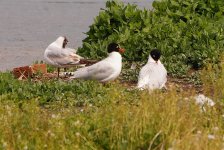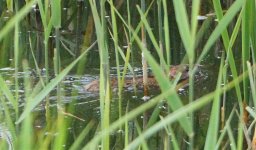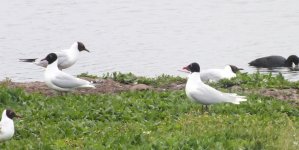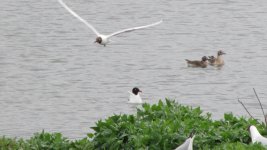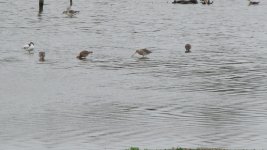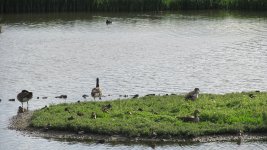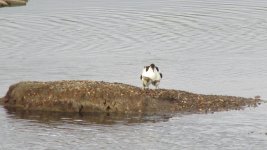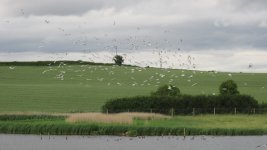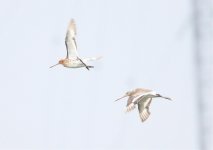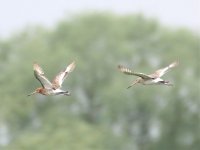Phil Andrews
It's only Rock and Roller but I like it

Phil,
One for you, a ringed Avocet at the Flashes today. I think the brass ring is '88A' but this as clear as I can get it.:t:
hi Bob
this bird was pointed out to me by Dave Jackson a couple of weeks ago its been named "Dutchy" I think he said it was ringed in Holland, I'm sure Phil can give us its past and resent history.
Hi Bob - I believe this is the regular ringed bird although the white leg ring in now discoloured.
A colour-ringed bird with white ring "64" on its left leg and a gold ring on its right leg was noted from the 30th April 2016, forming one of the breeding pairs. It was originally ringed on the 4th September 2008 in Zwarte Hann, Netherlands. It was subsequently recorded at Blacktoft Sands RSPB, East Yorkshire on the 8th May 2009 and at Halsham, East Yorkshire on the 3rd June 2013 before being recorded at several sites in the Worcestershire in 2014 - Clifton Pits on the 18th, 19th and 22nd April and again in early May, the Moors Pool on the 7th May as well as at Lower Moor during the same period (it could potentially also be the colour-ringed bird distantly observed at Middleton Lakes on the 30th March and 9th April 2014). Last year it was noted on a number of dates from the 7th April and formed half of one of the breeding pairs which hatched four young hatched from the left hand of the first Flash island of which three fledged.





